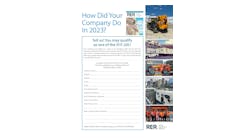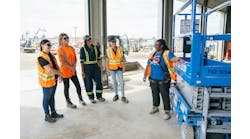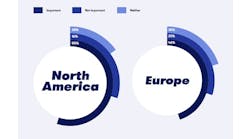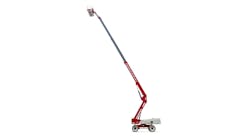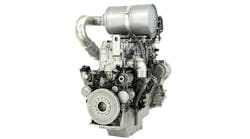Members of International Powered Access Federation’s North American subsidiary, recently addressed Occupational Safety and Health Administration’s Advisory Committee for Construction Safety and Health (ACCSH) in Washington DC. During the meeting, Kevin O’Shea, of Mastclimbers LLC in Atlanta, chairman of the IPAF International Mast Climbing Work Platform Committee and co-chair of the Scaffold Industry Association MCWP Council, presented a report on the work that has been done by the mast climber industry since he last addressed the committee in December 2007. Tony Groat, executive vice president of American Work Platform Training Inc., focused on the need for clarity of what is appropriate training for aerial work platform operators.
During the meeting O’Shea stressed that MCWPs are not rental-ready products; they need to be erected before use and guidelines are required for their erection, dismantling and use. It is estimated that there are 8,400 MCWP units in the U.S., with an average utilization of 70 percent or 5,880 units in use on a daily basis. The average duration for a MCWP on a job is about two months with an average number of five dismantles and erects per unit per job or about 30 dismantles and erects each year per unit. On average there are three users per unit, so up to 17,640 people are using this equipment every day. Depending on the length of any individual job, 25 percent of that labor force could change every four to six weeks, supporting the need for education in the safe use of MCWPs.
Three years ago O’Shea discussed the need for a revision of the ANSI A92.9 MCWP design standards, the necessity for industry-wide safe-use guidance, and the need for a wide range of training courses for all levels of expertise and responsibility. Since that time through a combined effort of SIA and IPAF, a revised A92.9 MCWP design standard is due for release in early 2011 and a new document, “IPAF Guidelines for the Safe Use of Mast Climbing Work Platforms” has been released. The document is a comprehensive guide for the management, installation and use of the product that has been reviewed and endorsed by SIA. In addition, IPAF’s internationally recognized training course for MCWPs and its Powered Access Licensed-Registration (the PAL card), are now being offered by IPAF training centers and SIA’s Accredited Training Institutes in North America.
SIA has also created an alliance with OSHA to produce outreach materials for mast climbing work platforms including a tip sheet that contains vital safety information for the users of the equipment. Additional information on the assessment of ground conditions, and safe methods of tying to the structure, are currently in the review process as well as an MCWP Awareness Course for OSHA regulators.
At the conclusion of O’Shea’s presentation the ACCSH committee put forward a motion to make the “IPAF Guidelines for the Safe Use of Mast Climbing Work Platforms” available online and to set up a working group to recognize the work that has been completed for MCWP safety to date and to continue to develop additional guidelines for the erection, dismantling and safe use of the equipment.
Groat spoke to the group to discuss the lack of clarity as to what is appropriate operator training. Groat stated that a document designed to address this problem titled “Statement of Best Practices of General Training and Familiarization for Aerial Work Platform Equipment” was launched in February 2010 by a group of trade associations including the American Rental Association, the Association of Equipment Manufacturers, the Associated Equipment Distributors, IPAF and SIA.
This first-of-its-kind industry initiative is an educational document that defines the differences between “training” and “familiarization” and clarifies what is required for general training and model-specific familiarization of AWP equipment. It was developed for use in the U.S. and incorporates industry-recognized and supported standards including the ANSI/SIA A92 Standards and the OSHA regulations. It presents best practices and minimum general training guidelines for AWP operators and clarifies the minimum qualifications of the AWP trainer.
Groat added that the “Statement of Best Practices of General Training and Familiarization for Aerial Work Platform Equipment” is currently available for use by OSHA and that IPAF is in the process of creating another best practice document for personal fall protection equipment used with aerial work platforms that will be available as soon as it is completed.
IPAF is a not-for-profit members’ organization that promotes the safe and effective use of powered access equipment worldwide. For more information, visit www.ipaf.org.

